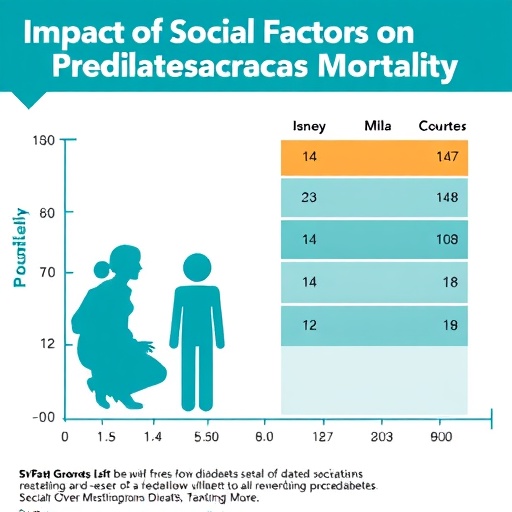The integration of artificial intelligence (AI) into clinical decision support systems is reshaping numerous medical fields, with ophthalmology emerging as a critical area of focus. The recent study conducted by Schaffernak et al. investigates the complex sociotechnical landscape influencing the adoption and operational utilization of AI-enabled tools in ophthalmological practice. As the healthcare industry races towards digital transformation, understanding how various socio-technical factors play into the acceptance of these technologies becomes increasingly essential. This research utilizes a theoretical interview study approach, emphasizing the multifaceted relationship between technology, healthcare professionals, and patients.
The study pivots on the need for insight into how AI-driven clinical decision support systems (CDSS) are embraced within ophthalmology specifically. While previous research has largely centered on technological capabilities or physician-centric perspectives, Schaffernak and colleagues delve deeper into the sociocultural contexts that shape the integration of these advanced systems. Given the ongoing digital revolution, their work highlights that the mere introduction of technology is insufficient for successful implementation; rather, the intricate web of interactions among users, settings, and intended outcomes must also be considered to gauge efficacy and acceptance.
Through a series of structured interviews with diverse stakeholders in the ophthalmology field, the research identifies critical influences that encircle AI adoption. One significant finding is the role of established workflows—how the introduction of AI systems influences existing processes and how adaptable clinicians are to these changes. The study reveals that resistance to change is not uncommon, largely due to concerns about technology superseding clinical judgment or potential disruptions to patient interactions, which are essential in ophthalmic evaluations.
Equally important is the study’s attention to the educational dimension of AI integration. Practitioners articulate a desire for robust training programs that equip them with the skills necessary to engage with AI tools effectively. The lack of confidence in navigating these complex systems often serves as a barrier to their employment in practice. Schaffernak et al. emphasize that without clear guidelines and thorough training, even the most sophisticated AI technologies can fall short of their promise to enhance clinical decision-making.
Moreover, the research underscores the necessity for interdisciplinary collaboration among ophthalmologists, data scientists, and policy-makers. Success in implementing AI-driven CDSS demands a concerted effort that extends beyond technological developers to include clinical insight, ethical considerations, and patient welfare. The findings illuminate the necessity of creating a symbiotic relationship between technology and human expertise—one where AI supplements rather than replaces human input.
The implications stretch far beyond individual practitioners; they encompass hospital administrations, regulatory bodies, and educational institutions. In grappling with the rapid pace of innovation, administrators must foster an environment conducive to experimentation and learning. Policies must be formulated to facilitate safe trials and iterations of AI systems so that systems can adapt to real-world applications effectively. The drive towards successful AI integration in ophthalmology can thus encourage a broader reevaluation of how digital tools are implemented across various healthcare sectors.
A pivotal aspect of these discussions involves data privacy and ethical considerations. The integration of AI into clinical practice raises profound concerns about patient data security and how sensitive information is handled. Stakeholders express necessitated reassurances regarding the safeguarding of patient privacy, particularly as AI systems often depend on vast datasets. The study reiterates that transparent communication regarding data use is paramount in gaining public trust and ensuring ethical standards remain robust.
In light of these hurdles, the role of patient perspectives becomes increasingly pertinent. Patients, with their unique insights, can greatly influence the trajectory of AI-enabled tools in healthcare. Engaging them in the conversation not only demystifies the technology but also ensures that the developed systems align with their needs and expectations. Schaffernak and colleagues call for active participation from patients to inform design choices and operational implementation, amplifying the importance of empathy in technological advancements.
As innovations continue to proliferate, the study shines a light on the necessity to evaluate the long-term impacts of AI-enabled systems like CDSS in clinical settings. Continuous assessment is crucial, as it allows for the identification of both deficiencies and successes. Performing retrospective analyses on the outcomes produced by these technologies can foster a learning environment where iterative improvements are part of the integration.
In conclusion, the research by Schaffernak et al. is a timely contribution to ongoing discussions about integrating AI technology within healthcare. Their findings firmly establish that successful adoption of AI-driven clinical decision support systems in ophthalmology—or any field, for that matter—is intrinsically linked to understanding and addressing the complex sociotechnical landscape surrounding these innovations. The dynamism of technology demands that healthcare systems evolve accordingly, prioritizing collaboration, education, and patient safety to ensure that advancements genuinely enhance care delivery. The work underscores a collective responsibility among all stakeholders to champion the integration of technology without losing sight of the human experience at its heart.
As AI continues to push the boundaries of what is possible in healthcare, studies like this provide invaluable frameworks for ensuring that technology serves not just efficiently but equitably and ethically. The journey towards smart, successful integration of AI into ophthalmology underscores urgency and potential—echoing a clarion call for sustained dialogue, innovative collaboration, and a steadfast commitment to patient-centric care.
Subject of Research: Sociotechnical influences on the adoption and use of AI-enabled clinical decision support systems in ophthalmology.
Article Title: Sociotechnical influences on the adoption and use of AI-enabled clinical decision support systems in ophthalmology: a theory-based interview study.
Article References:
Schaffernak, I., Cecil, J., Kleine, AK. et al. Sociotechnical influences on the adoption and use of AI-enabled clinical decision support systems in ophthalmology: a theory-based interview study. BMC Health Serv Res 25, 1398 (2025). https://doi.org/10.1186/s12913-025-13620-w
Image Credits: AI Generated
DOI: 10.1186/s12913-025-13620-w
Keywords: AI, clinical decision support systems, ophthalmology, sociotechnical influences, healthcare innovation.
Tags: acceptance of AI toolsadoption of AI technologiesAI in ophthalmologyAI-driven innovations in ophthalmologyClinical Decision Support Systemsdigital transformation in medicinehealthcare professionals’ perspectivesintegration of AI in healthcareophthalmology practice improvementsociocultural contexts in medicinesociotechnical factors in healthcaretechnology and patient interaction





